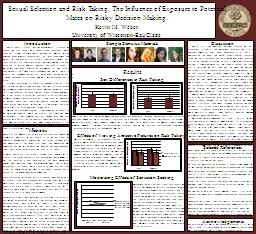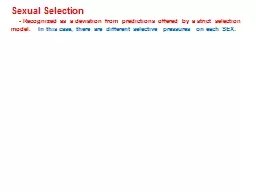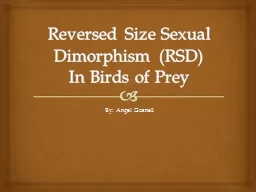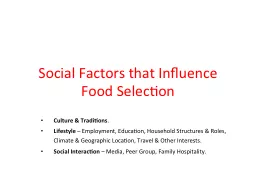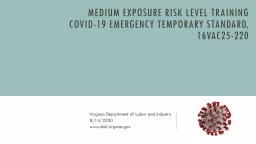PPT-Sexual Selection and Risk Taking: The Influence of Exposure
Author : giovanna-bartolotta | Published Date : 2015-12-08
Kevin M Weber University of WisconsinEau Claire Introduction Methods Results Discussion Selected References Acknowledgements The printing of this poster was funded
Presentation Embed Code
Download Presentation
Download Presentation The PPT/PDF document "Sexual Selection and Risk Taking: The In..." is the property of its rightful owner. Permission is granted to download and print the materials on this website for personal, non-commercial use only, and to display it on your personal computer provided you do not modify the materials and that you retain all copyright notices contained in the materials. By downloading content from our website, you accept the terms of this agreement.
Sexual Selection and Risk Taking: The Influence of Exposure: Transcript
Download Rules Of Document
"Sexual Selection and Risk Taking: The Influence of Exposure"The content belongs to its owner. You may download and print it for personal use, without modification, and keep all copyright notices. By downloading, you agree to these terms.
Related Documents

